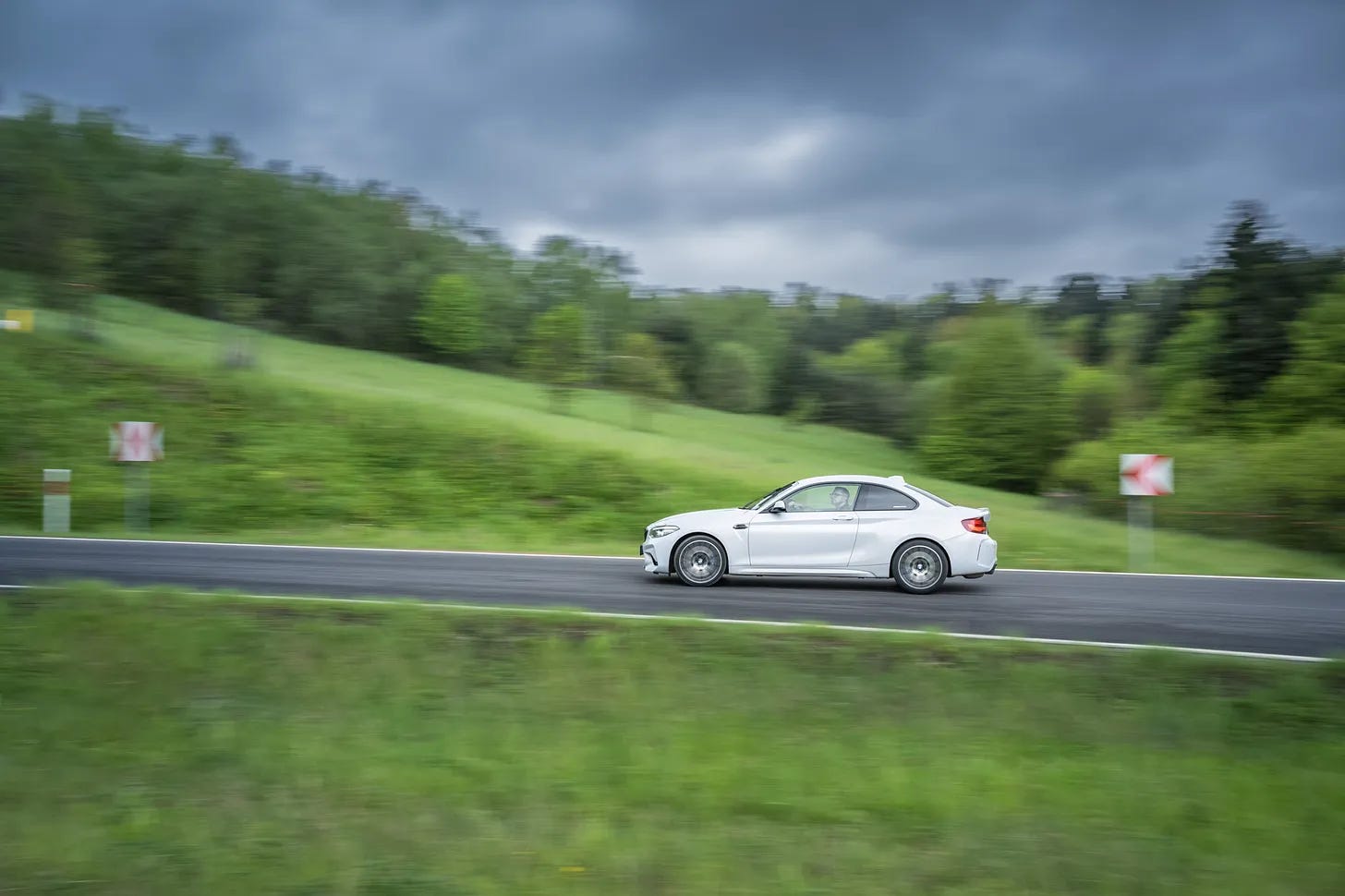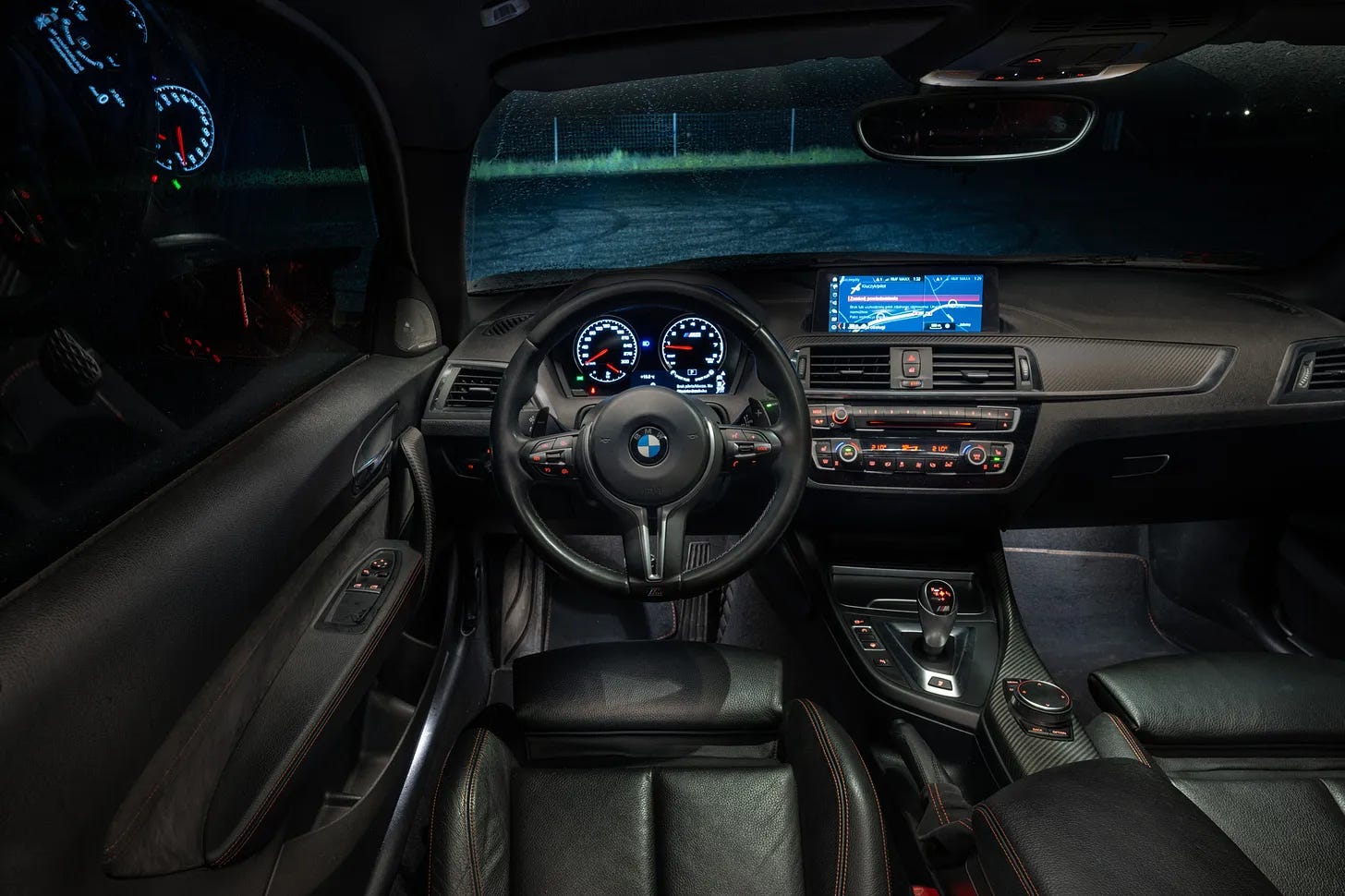The view from the top.
BMW M2 Competition driven on the most twisty road in Poland.
How many times have we all been told that the latest “M” is the best and the only one? The best that BMW has ever produced and the only one you need to buy because it’s the end of an era and there won’t be another…
The craze for the sporty, compact BMW started in 1974 with the launch of the 2002 Turbo model. Eleven years later, the groundbreaking M3 E30 debuted, considered for many years as “Peak BMW”. Even the M3 E46 during its market presence didn't take down the reputation of the E30, though today, many years after production ended, it grows into a bigger legend. The next generation (E90/E92/E93) had a problem – it became a larger and more overwhelming car. Moreover, after the launch of the 1 Series, it lost the “entry-level” title. The smallest car in the manufacturer's range, especially on steroids, was always welcomed with open arms by BMW enthusiasts. In 2011, the 1 Series M Coupé hit the showrooms as the spiritual successor to the M3 E30. Supposedly great, supposedly the best M ever. Again. It was no different in 2016 when the M2 F87 arrived. Revolution! Peak form! On Grand Tour, none other than Jeremy Clarkson said it. He wasn’t joking. Not much water has passed in the Thames, and it turned out that the general public didn’t like that the car was powered by the N55 unit – not a pure Motorsport division powerhouse. The same engine powered a range of other, standard models from Bavaria. Fortunately, it stopped meeting the emission regs (officially) and had to be replaced. And, as the market well received the M2, they transplanted into it the heart from the M3/M4 (F80/F82) with the designation S55, but fearing a fratricidal fight, they detuned it to 405 bhp. And again, a hit! Another peak form, another “The last of its kind”.
Today (January 2024) the next-generation M2 G87 is already on the market, but it’s not certain that it will inherit the crown from its predecessor because the appearance of this car is… well, not into my taste, to be honest. I wouldn’t call it ugly, but for me, it's a bit too square. Straight angles and perpendicular lines dominated the air intakes, diffuser, and even the “kidneys”. Slopes and triangles from the depicted here F87 generation seem more dynamic. Looking at the profile of the two-door coupé, the viewer's eye, starting from the front lights, is led by the curve of the hood, not too heavily embossed. At the meeting point of the hood and the A-pillar, a vent cover is installed – a strong graphic point (especially on the white paint) – starting for the crease running backwards along the side of the car. This ascending line includes a door handle, and thanks to the light and shadow game, it doesn't stand out too much. That line fades in the space between the rear wheel arch and the point connecting the C-pillar to the boot lid. The line of the roof and windows is rounded, though the latter ends visually turning back with two sharper corners known as “Hofmeister kink” and leads the eye back, towards the front. Our attention stops at the characteristic mirror with two bars. The lower, mounting one is horizontal and installed in the front corner of the window. Base black, cover in body colour. Visually appealing and supposedly effective aerodynamically.
The cabin is quite spacious, with a wide range of possibilities for setting the seats in the first row and the steering wheel. MS is a tall lad that always complains about this aspect in most cars he sits in. Here he took a position he described as “ideal”. In the smallest M! I am not much taller than Danny DeVito and have no ergonomic problems in any car. I do, however, have issues with design. The interior of the F87 generation does not dazzle with trinkets and gigantic screens. That idea has been known for years, and the visual language is derived from the 3 Series F30. The steering wheel is round with a round airbag cover and a thick rim, typical of M models. Not everyone likes this thickness, I treat it as a hallmark of these cars. The design of the steering wheel is in my top three favourites. It is a gauge that combines both worlds – analogue and digital. The needles are analogue, but the dials give a digital impression. This might be due to the perfectly matched blacks of the materials and the uniform backlighting. The edges of the gauges are defined by plastic frames, which visually reflect the trim installed around the airbag cover on the steering wheel. A very pleasant design.
Our test car in Alpine White is set on 19–inch Y-Spoke alloys with 245/35 rubbers at the front and 265/35 at the rear. A nice combination. Power is sent to the rear wheels only via an electronically controlled limited–slip differential and, heading towards the engine, through a 7-speed dual-clutch automatic. The engine, as I mentioned earlier, is the S55 unit, more powerful than its predecessor by 39 HP (405 HP at 5230 – 7000 rpm) with an increased torque of 85 Nm (from 465 Nm to 550 Nm at 2350 – 5230 rpm). Other changes include adding a second turbo, stronger connecting rods and cylinders, a closed engine block, and improved cooling. Weight? Just over 1.5 tonnes. Result? 4.2 seconds to 60 mph.
To test “The Ultimate Driving Machine”, we need to find “The Ultimate Driver’s Road”. Stelvio Pass is too far, but a small taste of it can be found on the most picturesque road in Poland – route 28 through Przysłup in the Silesian Mountains. We navigate its eighteen turns perhaps a hundred times, at varying speeds, on both dry and wet surfaces. Conclusions? What a car that is! As soon as the engine revs above 2000 rpm, it becomes eager, the upper band is aggressively enticing, and the gearbox transmits power quickly and efficiently. The DCT has three modes, and I am, craving sports thrills, switching it to the most aggressive mode, resulting with jerky upshifts, adding 10 points to the drama. Very satisfying! I press the gas pedal harder to feel the vicious character of the car. Thanks to its compact dimensions and suspension tuning, I can precisely determine the car's position on the road, and due to a smaller wheelbase than the M3, I feel the rear tends to swing out.
The steering is precise and consistent. Changing direction is assured, even in corners approached with higher speeds. Surprisingly, one can feel how soft, compared to the front of the car, the rear is. As you enter a turn, the M2 is slightly understeering, in the middle of the turn it finds balance (the weight distribution is close to ideal – 50/50), and how it exits depends solely on the driver. I set the drive mode to Sport+ and grip the steering wheel harder.
After completing the first day of tests and with several decent photographs on my memory card, we checked the current market value of the M2. Prices for used models range from 40 to 60 thousand dollars (in Europe), and currently about 30 units are listed in polish Otomoto.pl. The new generation starts at 75 thousand $. It's hard for us to choose, not having experience with the new generation, but the more analogue F87 seems more interesting.

We spent two days on this beautiful road. Additional photos and a strobe shoot after dark. Driving up and down this road is mesmerizing. This car is mesmerizing. Not too big, not too arrogant, not overly modern. Just right. A good foundation for a monument commemorating “The Ultimate Driving Machine”.
Thanks to Hardcore Car Rent for providing the car. The car was tested on a closed road, in controlled conditions.
Dear Reader, I invite you to subscribe to the newsletter. I also encourage you to support the site on Buy Me a Coffee or Patreon. The funds collected will be used to develop the Heel and Toe magazine and ultimately allow full focus on the project. In the aforementioned service, sales of photos of the tested cars, including from this article, have started. These are collector's prints in numbered series on archival papers.
Have a good one!











